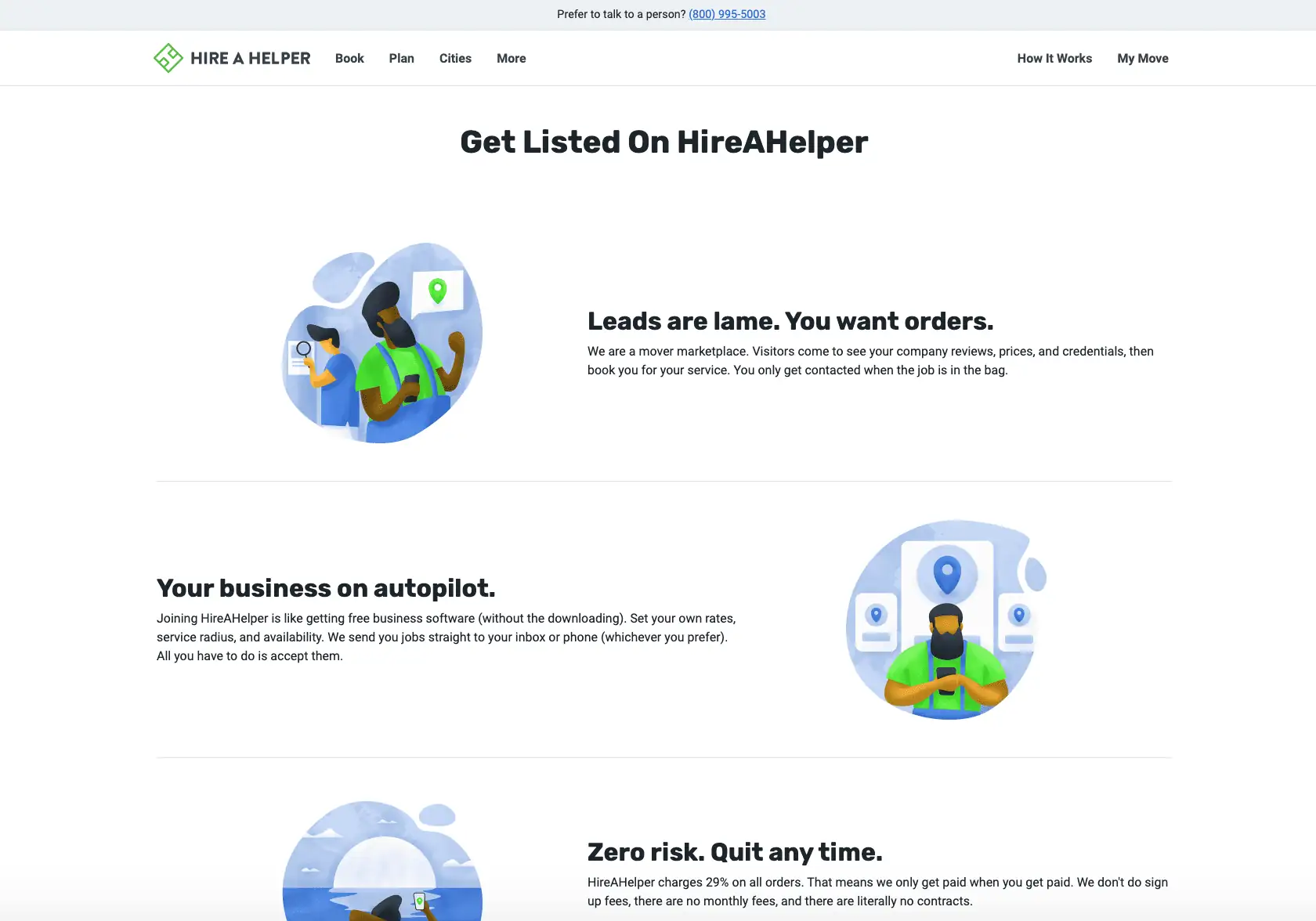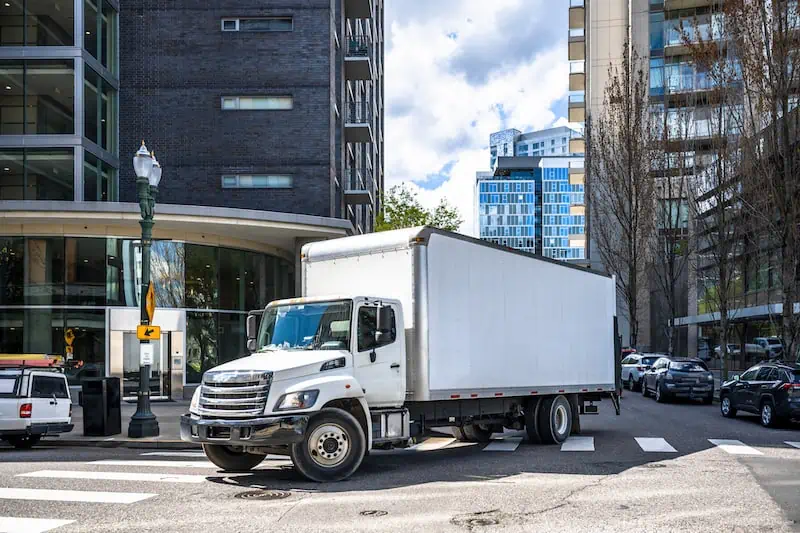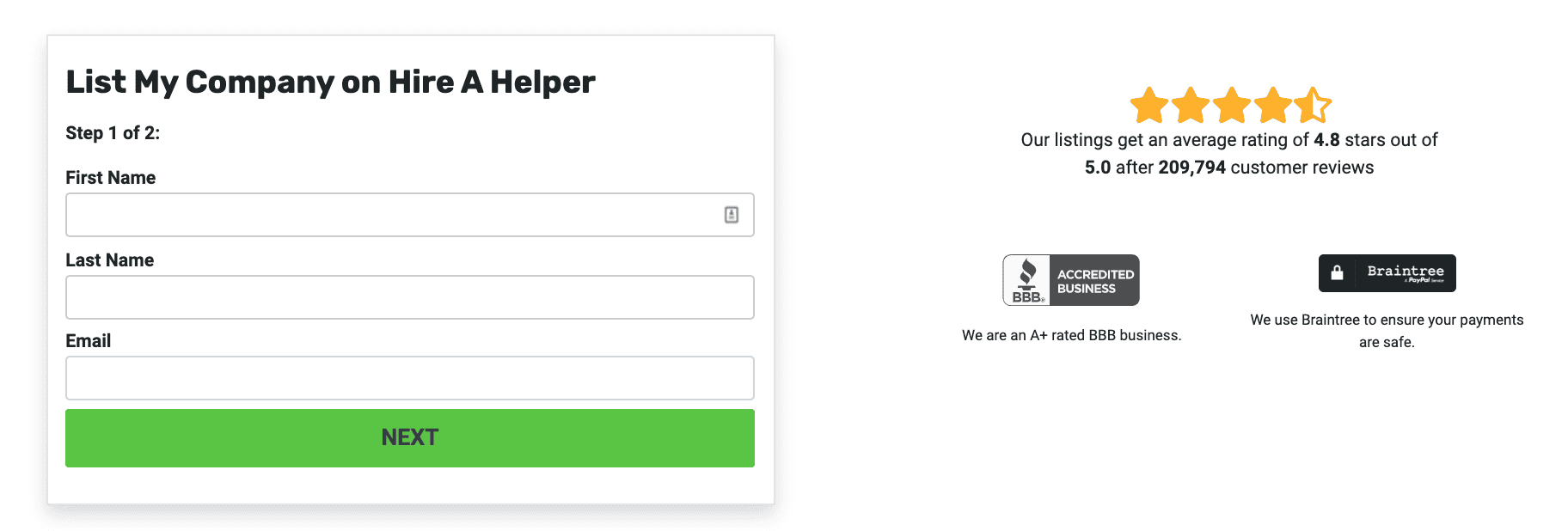Key Findings:
- Moving companies tend to earn between $75-128/hr. or between $206-352 per move
- Based on HireAHelper data from 2022 so far, average mover earnings are $110/hr.
- Seattle is potentially the most lucrative place to become a mover, with hourly earnings as high as $137/hr.
- Movers in Maine and Iowa make an estimated $132/hr. — the highest rate in the country
- Sherman-Dennison, TX has the biggest gap in the moving services market, with 608 moves per moving company registered in the metro area
As inflation continues to rise, many Americans are beginning to notice the prices of consumer goods are drifting out of reach. This is likely why, according to a recent study, nearly half (44%) of Americans are turning to side hustles to make ends meet.

Despite some real estate markets cooling off, the demand for moving services is high. Homes are still selling fast, and as rents climb higher, many are moving out of their homes to find cheaper accommodations or to live with family.
While starting a full-scale moving company with a fleet of trucks, drivers, and movers is an undertaking too big for a side hustle, starting a moving labor company is actually relatively simple.
All you need is a business license and some start-up costs. Ultimately, if you are comfortable with lifting heavy items and have time to spare, you could realistically start a moving labor business and earn upwards of $100/hr. by helping people move.
And the data shows that people who are currently doing it are doing quite well.
Moving Labor Companies: How Are They Defined and How Do They Work?
We often think of movers as folks that drive up in a truck, load up all your earthly belongings and deliver them to your new home. In the “biz”, these are known as “full-service movers”. And they tend to be more expensive.
This is why in reality, the overwhelming majority of moving companies that exist are what we call “labor-only” movers.
“…even if you charged at the lower end…at $250 per move, or roughly $90-100 per hour, you only need to pick up four moves to make $1,000. Not bad for a weekend, huh?”
Labor-only
The difference is that a moving labor company is a company that helps people with loading, unloading, and, sometimes, packing up people’s possessions — no driving. The average person often books their truck or container separately, as this is far cheaper.
Here are a few reasons local moving labor works as a side hustle:
- In most states, you don’t need a special mover’s license
- There are minimal start-up costs, as you don’t need to purchase a moving truck
- Demand for moving services is highest on a weekend, meaning you can do it alongside your work or studies
- Moving costs (read: mover earnings) in 2022 are the highest they’ve ever been in U.S. history
Where Do Local Movers Find Customers?
Of course, it’s not quite as simple as registering as a moving labor company and watching business come flying through the door.
Here are the typical places movers tend to use to attract customers.

Craigslist
+ The most famous classified ads website, this is a typical starting point for moving labor hopefuls, with millions of people checking the website every day.
– Costs money to post ads in the moving section as a provider.
– Customers can also be flakey, often looking for bargain-basement pricing, and often end up being very hard to service.

Yelp
+ Popular with people looking for local businesses, it’s a free place to get attention/find customers. Business owner tools allow you to upload logo/team photos of you and your crew to boost credibility.
– No actual online booking, you just accrue lots of “leads”. You’ll have to field lots and lots of messages, emails and phone calls from people looking for a price.
– Low rates of converting mean most of this work will not turn into orders.
HireAHelper

+ Completely free to list, no membership fees or cancellation fees.
+ Your very own landing page you can show to potential customers where you can easily display and edit your own rates/availability so people won’t call you to ask.
+ Insurance and 7-day-a-week customer service for both you and your customers.
– Insurance and customer service operate on a fee that is charged per order booked through the platform, which is how they pay for all of the above.
Your own website
+ Full control over how you present your new brand and services.
+ Direct booking puts every dollar right in your pocket.
– You need to create, design, and maintain the website.
– You’re responsible for all the customer service, marketing, and insurance.
– Cost of purchasing a domain, fees for website hosting.
Needless to say, you can also create a page for your moving labor company on Facebook and Instagram, or even list it on your local Yellow/White Pages. Oftentimes, a mixture of approaches is useful at the start, before you figure out which one works best for your moving side hustle.
How Much Can You Earn as a Mover?
Let’s face it, if you already have a job or other commitments, you’re probably not going to launch into moving as a full-time pursuit.
The good thing about moving as a side job is that nearly one in three (30%) moves takes place either on Saturday or Sunday. In other words, if you’re looking to casually work as a mover over the weekend, you’re in luck, because that’s when the demand is highest.
To calculate a ballpark number of how much local movers earn, we’re going to make the following assumptions:
- You only work on weekends
- You don’t work more than eight hours a day
- You have a partner with whom you work as a two-person team and split earnings 50-50
With that said, the average take-home an individual moving job earned on HireAHelper in 2022 was $110 per hour (after fees).
That rate is based on the service of two movers loading and unloading a customer’s belongings (meaning, not counting potential tips, one mover will typically get about half of that, or $55 per hour.)
“The data show that 6 of the 20 metros where the demand for moving services most outmatches the current supply exists in Texas, especially in Sherman-Dennison, TX, where the ratio of moves to moving companies is roughly 600 to 1!”
Similarly, Yelp reported a local move quote average of $128. Forbes suggests local movers charge between $25 to $50 per mover, per hour, while ConsumerAffairs estimates the average cost for a local move is $80 to $100 per hour for a team of two movers.
The following graph shows how much you could be earning as a two-person team, using the reported average duration of a move of two hours and 45 minutes.
Please note that the above figures are indicative only. As a newly registered moving company, you probably won’t be able to charge high rates straight away. Moves also come in all shapes and sizes, affecting how much you could charge for them. This is just an average.
That said, even if you charged at the lower end of that scale at $250 per move, or roughly $90-100 per hour, you only need to pick up four moves to make $1,000. Not bad for a weekend, huh?
Cities & States Where Movers Earn the Most Money
Your earning potential, among other things, will depend on where you are in the country.
According to a recent estimate of moving costs, people pay the most for their moves in San Jose ($520) and Seattle ($495). But that’s just a broad snapshot. Let’s break it down more to see how services translate into mover earnings, and where it may actually be most lucrative to start a moving labor company.
Cities
Using data on moves booked through HireAHelper.com, taking into account commission rates and the typical duration of a move throughout different cities, here are the top 10 cities where movers make the most money per hour.
Looking at the data through this lens, Seattle grabs the top spot with an estimated $136/hr. net earnings. In cities like Columbus, OH ($126/hr.), San Francisco ($125/hr.), and Oakland, CA ($125/hr.) the earnings are all around the $125/hr. Mark.
States
Moving on to states’ potential mover earnings, we find Maine ($132/hr.) and Iowa ($132/hr.) with the joint highest earnings, with Utah and Washington closely behind ($129/hr.).
Going down the list, Arkansas is next with $128/hr. in potential net earnings. This highlights that moving is a universal need, and that small states can compete against states with big cities like San Jose or San Francisco, where the cost of living is highly expensive (and therefore potentially more lucrative). The average earnings for movers in California are comparatively middling in the take-home department, averaging around $110/hr. per move.
Check out the chart below to see what mover earnings are like in your state.
This section is based on data from moves booked through HireAHelper and their partner sites. Earning figures represent average estimates; actual earnings may vary.
Supply and Demand: Cities and States With the Greatest Need for New Moving Companies
High earnings are great to aim for, but it’s worth bearing in mind that crowded markets where earnings are high are often hard to compete in — especially for a brand new company.
Like with any kind of business, the supply and demand (and thus the price people are willing to pay for moving services) vary by location. If you’re just starting out as a moving company, ideally you’d like to start where there’s a gap in the market.
Cities
Based on our analysis of moving company data and the number of moves in America’s biggest metropolitan areas, here are 20 metros where the gap between potential demand for moving services and their supply is the biggest.
The data show that 6 of the 20 metros where the demand for moving services most outmatches the current supply exists in Texas, especially in Sherman-Dennison, TX, where the ratio of moves to moving companies is roughly 600 to 1!
Among larger metros with favorable demand-to-supply ratios are the Phoenix-Mesa-Scottsdale, AZ area (393 moves per moving company), the Houston-Baytown-Sugar Land, TX area (276), and the Dallas-Fort Worth-Arlington, TX area (255).
States
At the state level, the opportunity is greatest in Arizona and Missouri, where there are more than 200 moves per moving company. Kansas (188), Washington (187) and Texas (186) round off the top five.
To see what the supply and demand for moving services look like in your state, check the graph below:
Convinced? Here’s How You Can Get Started
If you think you have what it takes to safely move some couches, luckily, you don’t have to go in blind.
If you really wanna get the ball moving, here’s a moving business guide for starting and running your own local moving company. It has information on how to register a business, set prices for your services, where to find customers, which tools you need to buy for the job, and way more.
Want a license to drive on the job too? Here’s a guide for starting a fully-fledged moving company, detailing the necessary steps for starting a moving business with links to the proper business licensing authorities in each state.






